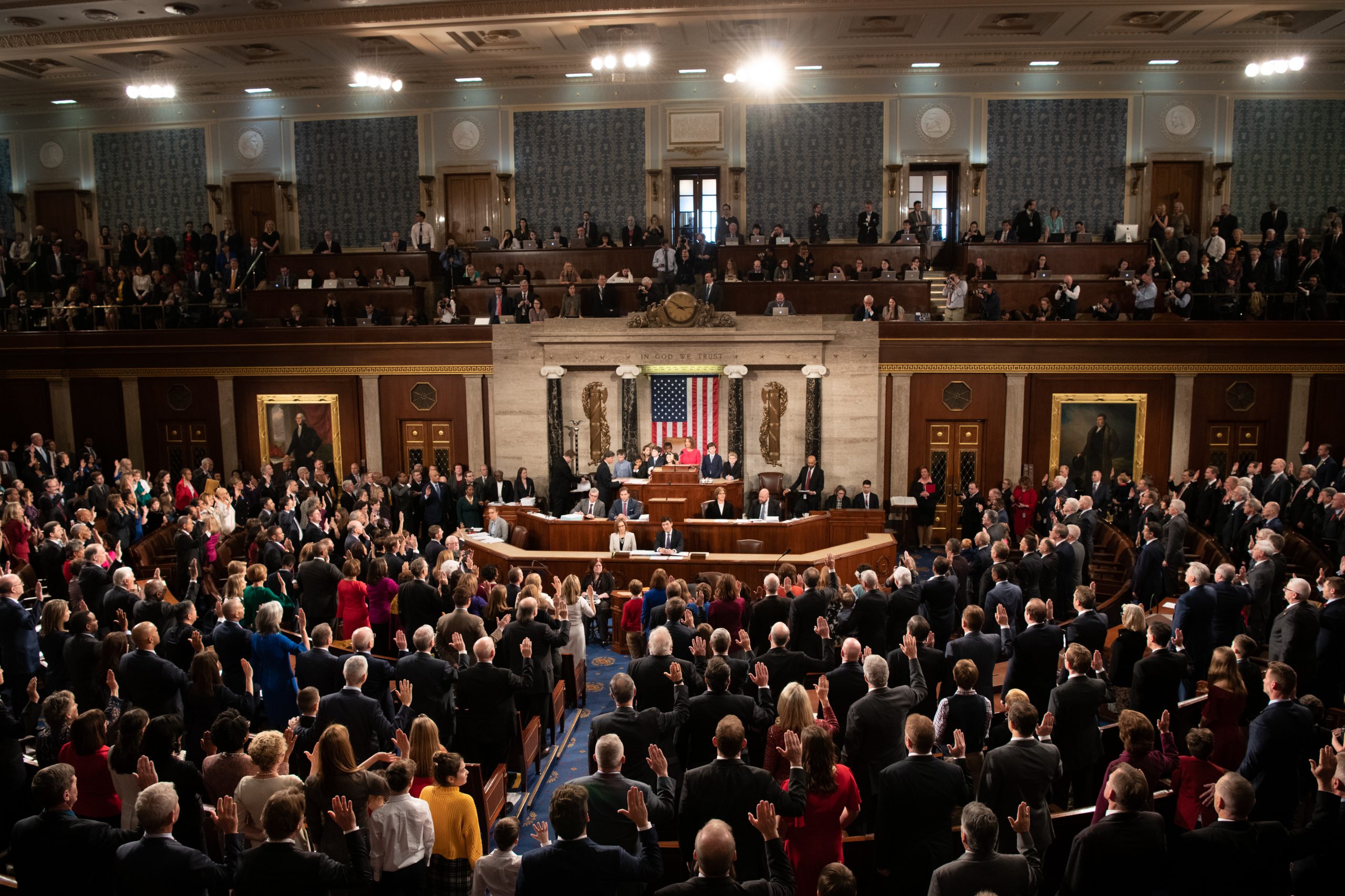
434 lawmakers, including 89 new freshman Members, were sworn in to the 116th Congress on January 3, 2019. Photo by Phi Nguyen.
The National Technology Transfer and Advancement Act (NTTAA; United States Public Law 104-113) was signed into law March 7, 1996. The Act amended several existing acts and mandated new directions for federal agencies with the purpose of:
- Bringing technology and industrial innovation to market more quickly
- Encouraging cooperative research and development between business and the federal government by providing access to federal laboratories
- Making it easier for businesses to obtain exclusive licenses to technology and inventions that result from cooperative research with the federal government
The NTTAA — along with administrative circular A-119 from the White House Office of Management and Budget — made a direct impact on the development of new industrial and technology standards by requiring that all Federal agencies use privately developed standards, particularly those developed by standards developing organizations accredited by the American National Standards Institute (ANSI). In circular A-119 federal agencies were also encouraged to participate in the development of those standards.
Nearly every nation has a standards developing organization “similar” to ANSI but with important differences:
- ANSI is not a standards developing organization itself; it only accredits them according to its Essential Requirements: Due process requirements for American National Standards.
- Most of ANSI’s peer national standards bodies in other nations, such as Germany (DIN), actually develop standards of their own. ANSI is steward to a number of consensus products for accredited developers but it is not directly responsible for leading practice discovery and promulgation. It supports document sales for such organizations through its webstore.
- Most of ANSI’s peer national standards bodies in other nations are government agencies which are supported by taxpayers.
The U.S. standards system is not supported directly by taxpayers as it is in other nations. Our system is inspired by ideas bubbling up from the workpoint from non-government, or private sectors like our own. In most other countries, the opposite is true – standards activities are initiated from the top-down — i.e by the national government. The difference between our system and others presents difficulties in balancing the market of materially affected stakeholders because of costs associated with financing the professional time and expertise of subject matter experts who are effective in standards development spaces. While discussion continues about how well the US non-government sector is doing to advance national technology strategy continues (see January 17, 2012 White House Memo M-12-08 and the recent revisions to OMB-119) the US standards system remains the most effective process for advancing national technology priorities for the education and university-affiliated health care industry. Because most of our industry is spending public money both business and academic units should be engaged with ANSI in contributing to the success of the NTTAA legislation.
The NTTAA also seeks to make innovation profitable — especially by inventive people and organizations that apply the results of federal research. The US Patent and Trademark Office was one of the original administrative offices recognized in Section 8, Clause 8, of the US Constitution “…to promote the progress of science and useful arts, by securing for limited times to authors and inventors the exclusive right to their respective writing and discoveries”
Perspective: We have explained the reciprocal relationship between standardization and innovation in previous publications and have given many concrete examples in this website about how we participated in the leading practice discovery due processes accredited by ANSI. We have had the process explained to our industry personally by the President and CEO of ANSI at the Ross School of Business in October 2014. In a sense, ANSI due processes ensure a “liquidity of ideas” in technological spaces similar to the way the FOREX exchange provides a balanced, open and transparent process for all materially affected stakeholders in the financial markets.
In the processes that govern infrastructure markets it is relatively easy for manufacturer, insurance, and labor interests to be “in the market” — they simply build the cost of retaining intellectual property (i.e. subject matter experts, lobbyists, thought leaders, etc.) into the price we pay for their product or service. The same is true for the Building Inspector, Fire Marshall or other Compliance Officer. These interests bring “life” to consensus by putting them in service of public safety. The public safety budget is always included in the cost of running a unit of government.
It has proven much more difficult for the user-owner to participate in technical standards markets despite the need to continually rehabilitate our industry’s physical infrastructure. Some of the 235+ ANSI accredited standards developers have reported difficulty getting the “user interest” to participate at a proportional scale as all the other interests. The result for the stakeholder not at the table — the $300 billion education and health care facilities industry — is inefficient price discovery and less-than-optimal resource allocation.
Issue: [11-31]
Category: Federal Regulation
Contact: Mike Anthony, Jack Janveja, Christine Fischer, Rich Robben
LEARN MORE:








